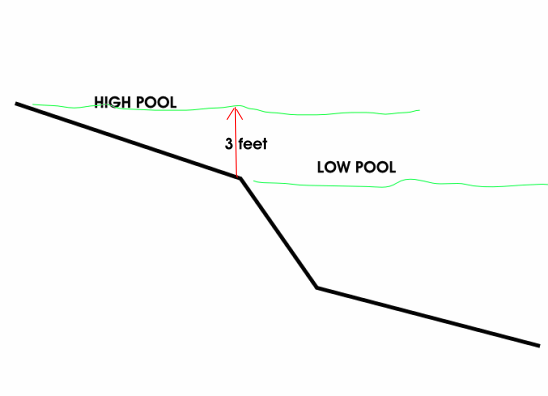Ryan, you not have seen my previous thread which shows my proposed pond contour:
Considerations for a dual level pond My diagram looks very similar to your second rendering.

I think that often people do design their ponds similar to your second example. The problems I've observed result from lower than optimum water levels, either from drought, design issues, or from pond liners that might slowly leak making the planned water level unrealistic.
That's the reason I'm currently considering a gradual slope beginning well above the highest waterline and continuing straight down to maybe 5 or 6 feet below the highest level.
One clear advantage to that consistent slope is that regardless of the water level, the bank can be maintained easily and the above water environment made to look "natural". In other words in an extended low water situation someone wouldn't look at the pond and realize that it was low. After all, who hasn't had to deal with low water? Why not design a pond to anticipate that?
I know that by eliminating the fast drop off into deep water other problems may be encouraged, but I'm looking for some good evidence that that's true. If I'm going to give up the easy maintenance of a gradual slope, I want to try to quantify the advantages I'm gaining. Also, it's not that I'm prioritizing looks over function, but before I give up a good looking pond with an easy to access shoreline, I want to know what functional advantage I'm gaining.